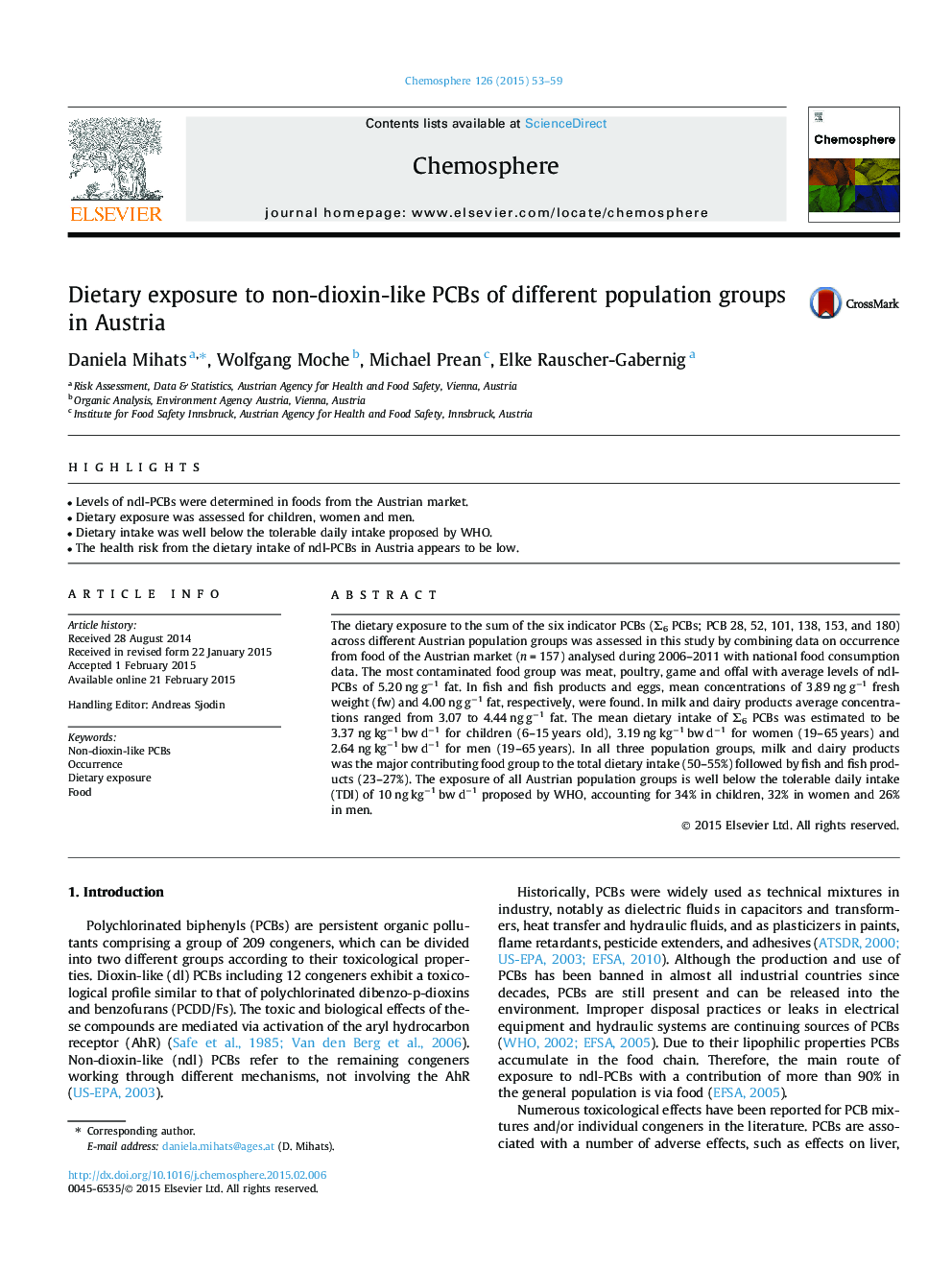| Article ID | Journal | Published Year | Pages | File Type |
|---|---|---|---|---|
| 4408417 | Chemosphere | 2015 | 7 Pages |
•Levels of ndl-PCBs were determined in foods from the Austrian market.•Dietary exposure was assessed for children, women and men.•Dietary intake was well below the tolerable daily intake proposed by WHO.•The health risk from the dietary intake of ndl-PCBs in Austria appears to be low.
The dietary exposure to the sum of the six indicator PCBs (Σ6 PCBs; PCB 28, 52, 101, 138, 153, and 180) across different Austrian population groups was assessed in this study by combining data on occurrence from food of the Austrian market (n = 157) analysed during 2006–2011 with national food consumption data. The most contaminated food group was meat, poultry, game and offal with average levels of ndl-PCBs of 5.20 ng g−1 fat. In fish and fish products and eggs, mean concentrations of 3.89 ng g−1 fresh weight (fw) and 4.00 ng g−1 fat, respectively, were found. In milk and dairy products average concentrations ranged from 3.07 to 4.44 ng g−1 fat. The mean dietary intake of Σ6 PCBs was estimated to be 3.37 ng kg−1 bw d−1 for children (6–15 years old), 3.19 ng kg−1 bw d−1 for women (19–65 years) and 2.64 ng kg−1 bw d−1 for men (19–65 years). In all three population groups, milk and dairy products was the major contributing food group to the total dietary intake (50–55%) followed by fish and fish products (23–27%). The exposure of all Austrian population groups is well below the tolerable daily intake (TDI) of 10 ng kg−1 bw d−1 proposed by WHO, accounting for 34% in children, 32% in women and 26% in men.
